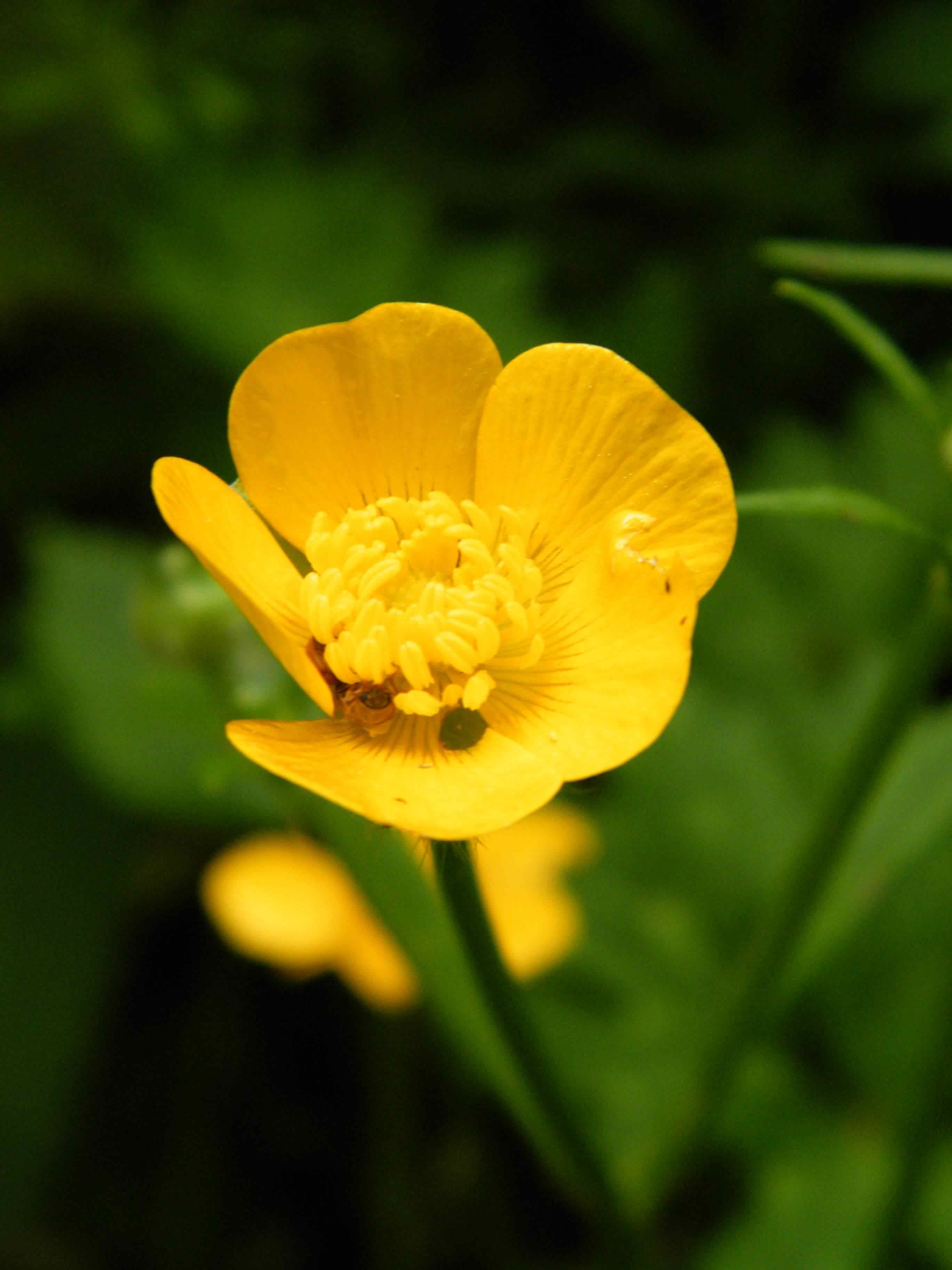Ranunculus Pastel Mix - Persian Buttercup Bulbs (Not Seeds) - 10 XL Bulbs. 3.7 out of 5 stars. Only 15 left in stock - order soon. Bulbous Buttercup (Ranunculus bulbosus) Bulbous buttercups are rather large, growing up to 16 inches tall with rounder bases. Their foliage is stalkless, and their flowers have five petals in bright yellow. They’re often found in the meadows and pastures of Scotland and England. But they can also grow in sand dunes and dry soils. The familiar and widespread buttercup of gardens throughout Northern Europe (and introduced elsewhere) is the creeping buttercup Ranunculus repens, which has extremely tough and tenacious roots. Two other species are also widespread, the bulbous buttercup Ranunculus bulbosus and the much taller meadow buttercup Ranunculus acris.
Herb: Bulbous Buttercup
Latin name: Ranunculus bulbosus
Family: Ranunculaceae (Buttercup Family)
Medicinal use of Bulbous Buttercup:
The whole plant, and especially the sap, is acrid, anodyne, antispasmodic, diaphoretic, rubefacient. It was at one time rubbed on the skin by beggars in order to produce open sores and thereby excite sympathy. The root has been placed in a tooth cavity to act as a painkiller. A decoction of the plant has been used in the treatment of VD. Use this remedy with caution, see the notes above on toxicity.Description of the plant:
Height:
30 cm(11 3/4 inch)
Habitat of the herb:
Meadows, lawns, dry pastures, grassy slopes and fixed dunes, preferring a calcareous sub-strata.
Edible parts of Bulbous Buttercup:
Leaves - cooked. A famine food used when all else fails, and I would rather give it a miss even then! Root - must be dried beforehand and thoroughly cooked. When boiled, the roots are said to become so mild as to be eatable, though personally, I would rather give this one a miss as well. See the notes above on toxicity.Propagation of the herb:
Seed - sow spring in a cold frame. This species is a common weed and doesn't really need any help from us. Division in spring. Very easy, though probably totally unnecessary, larger divisions can be planted out direct into their permanent positions.
Cultivation of Bulbous Buttercup:
Bulbous Buttercup Identification
Known hazards of Ranunculus bulbosus:
 All parts of the plant are poisonous, the toxins can be destroyed by heat or by drying. The plant has a strongly acrid juice that can cause blistering to the skin.
All parts of the plant are poisonous, the toxins can be destroyed by heat or by drying. The plant has a strongly acrid juice that can cause blistering to the skin.Buttercup Plants For Sale
Plant information taken from the Plants For A Future.Ranunculus Bulbosus Plants
